Eccentric Exercise
Eccentric exercise, often referred to as “negatives,” is a unique and powerful approach to physical training that focuses on the controlled lengthening or stretching of a muscle while it is under tension. Unlike concentric exercise, where muscles contract to lift a weight or perform a movement, eccentric exercise involves the controlled lowering or elongation of the muscle while resisting an opposing force.
This form of exercise is known for its distinct benefits, including increased muscle strength, improved muscle endurance, and potential injury prevention. Eccentric training is commonly used in various sports, rehabilitation programs, and fitness routines to target specific muscle groups and enhance overall physical performance.
What is Eccentric strength training?
Eccentric training is a sort of strength training that includes controlling weight as it goes downward with the help of the target muscles. This kind of exercise can promote muscular growth, enhance sports performance, and lower the chance of injury. The motion of an active muscle, while it lengthens under strain, is known as an eccentric contraction.
Eccentric exercise involves doing eccentric muscular contractions repeatedly. For instance, the eccentric phase of a biceps curl is the action of lowering the dumbbell back down from the lift as long as it is done gently rather than letting it fall (i.e., the biceps are contracted to regulate the pace of dumbbell descent).
One of the various stages in the movement of muscles and tendons, along with isometric contraction (no movement), isotonic contraction, and concentric contraction (shortening), is an eccentric contraction. In order to test the muscles, eccentric training focuses on slowing down the process of muscular elongation. This can result in stronger muscles, quicker muscle healing, and an improved metabolic rate.
For muscle and tendon groups undergoing concentric movement, eccentric movement acts as a braking mechanism to prevent injury to joints once the contraction is relaxed. For recreational and elite athletes, the elderly, and patients wanting to rehab specific muscles and tendons, eccentric exercise is very beneficial.
This latter part of the action is the subject of eccentric training, which makes it harder by reducing the cadence, or speed, of the eccentric phase. The external force of the weight, or gravity, is larger than the force you create to move it during the eccentric portion of the cycle. Because of this, eccentric training is frequently referred to as finishing “negative” reps.
Physiological mechanisms
Sarcomeres—small contractile units that make up the muscle’s “tension-producing tissue”—each comprise “thick (myosin) and thin (actin) myofilaments, (muscle filaments or proteins), that overlap to form a cross-bridge bond (attachment).”
As the myosin and actin cross-bridges regularly join and detach to drag the actin across the myosin and generate force, a muscle shortens during a concentric workout. One adenosine triphosphate (ATP) molecule is divided to provide energy for each cross-bridge attachment and detachment cycle. Such workouts include lifting weights and kicking a ball.
The eccentric movement stretches the muscle with an opposing force that is greater than the muscular force in controlled release reversals of such concentric motions. There may be fewer cross-bridge myosin and actin detachments when the myofilaments of the muscle fiber are stretched during such eccentric contractions. The muscle produces higher force when more cross-bridges are still connected. Walking down an uphill path or defying gravity while lowering a heavy object are a few of the exercises that include eccentric muscular activity.
Exercise-induced delayed onset muscle soreness (DOMS), also known as exercise-induced sarcomere stretching, occurs when eccentric movements stretch the sarcomeres to the point where the myofilaments are put under strain. The repeated-bout effect (RBE), which is being studied in connection to DOMS and eccentric exercise, has a lot of promise. The exerciser would eccentrically excite the muscle, then repeat at weekly intervals to increase strength and enable the strain (in response to a particular force level) to drop over time. This would help avoid or lessen DOMS from eccentric exercise, as well as speed up recovery from it.
Eccentric exercises
Resistance training or eccentric exercise is now utilized to treat sports injuries, as an alternate type of exercise for the elderly and those with neurological illnesses, COPD, cardiovascular problems, or cancer, and as a method of rehabilitation for those with cancer.
People with those conditions frequently experience muscle loss, and many of them are unable to follow intensive exercise regimens. Eccentric muscular contractions produce large forces with little energy expenditure. Due to these characteristics, eccentric exercise, in Hortobágyi’s opinion, has the greatest potential for building muscles. Muscles need to be overpowered by an external force as they lengthen in order to be strengthened. Muscle strengthening is essentially described by the idea of eccentric contraction.
There is a restriction concerning eccentric contractions in that they really result in muscle damage and injury. Eccentric contraction does not harm or injure the muscle; nonetheless, it may induce delayed onset muscular discomfort.
Proof of muscle growth without harm
Increasing quadriceps strength without reinjury is a persistent issue in ACL recovery. Without harming the ACL graft, surrounding soft tissue, or the articular cartilage, early, high-force eccentric exercise can be performed to build muscle strength and volume. The wet weight of the muscles and the fiber cross-section were noticeably greater than the control and level groups in an experiment on rat muscles following twenty sessions of treadmill low-intensity eccentric training. Based on these findings, it was determined that low-intensity eccentric contractions might “cause enough mechanical stress to create muscle growth without over-stressing, which could induce muscle fiber damage.
According to other studies, muscular injury is not necessary for hypertrophy to occur. Individuals performing eccentric training develop hypertrophy because of the increased mechanical stress caused by eccentric contractions. Low-intensity eccentric training can reduce muscle injury, according to studies on senior participants. Low-intensity eccentric exercise is recommended for seniors due to its low energy expenditure and low oxygen demand.
Oxygen consumption and eccentric contraction:
- Muscles require oxygen to function properly. Since the muscle is contracting eccentrically against resistance, this type of muscular activity is referred to as negative work. When the force on the muscle is larger than the force generated, negative work is the mechanical energy absorbed by the work done on the muscle. Bicycling was the subject of an experiment. The quantity of oxygen used when pedaling forward, or “positive work,” and pedaling against resistance, or “negative work,” were both measured.
- The oxygen consumption ratio was 3:7, meaning that less oxygen was used during negative work than positive exertion. Studies on individuals with severe COPD have been done due to the reduced oxygen consumption of eccentric exercise. These patients underwent an eccentric cycling training program, and the findings revealed no negative effects, minor muscular pain that had no impact on power, and good compliance. Other cycling studies also came to the conclusion that eccentric cycling was a safe substitute for COPD patients as they can undertake high-intensity labor with fewer expenses.
Eccentric exercise and cardiac output:
- How would eccentric exercise impact the heart given the decreased cost of oxygen?
The effects of eccentric and concentric cardiac contractions on cardiac autonomic regulation following exercise were investigated. Concentric control, eccentric control, concentric training, and eccentric training were the four groups of men (aged 18–30). Results showed that strength increase was facilitated by resistance training (eccentric contractions). Additionally, it was determined that during recuperation, cardiac vagal modulation increased.
Over the past ten years, several research on eccentric exercises have been undertaken. There is strong support for the claim that eccentric exercise is superior to concentric exercise in terms of power, energy cost, oxygen consumption, and muscle strengthening for both rehabilitation and training purposes.
Benefits of eccentric strength training
Because it has a wide variety of muscle-building advantages, eccentric training is a powerful training strategy used by athletes, bodybuilders, and physical therapists.
The top advantages of eccentric training are listed below:
Allows for training at a higher level
Supramaximal training is the practice of completing an activity with a resistance that is just a little bit greater than what a particular muscle can bear naturally.
When executing an eccentric contraction as compared to a concentric contraction, research regarding eccentric training demonstrates that our muscles are significantly stronger. As a result, eccentric exercise allows you to stress the muscle with greater weight than you could with conventional training.
In a 2018 study involving 15 young men, it was discovered that using supramaximal eccentric loading on the leg press increased force production and movement velocities. Sports like soccer, basketball, running, and volleyball, among others, that call for an explosive aspect may match well with these effects.
It’s vital to note that this training approach works better for people who have at least a few months of training experience under their belt in order to prevent damage.
More effectiveness when moving
Because they use the same amount of force as concentric motions but less muscular activity and energy, eccentric movements are unusual.
Furthermore, although they have the capacity to produce as much or more muscular power, eccentric muscle contractions biologically use only around 25% as much energy as concentric muscle contractions. This is believed to be caused by titin, an elastic molecule in muscles that prevents muscles from extending and resists uncoiling like a spring. This characteristic enables your muscles to “put on the brakes,” as it were.
Eccentric training may offer more value in terms of strength training since it produces excellent benefits without the energy cost of concentric contractions. This is what makes it a well-liked option in settings for rehabilitation and sports training. Eccentric exercise can be very helpful for people who are short on time since, when done correctly, it can deliver a stronger stimulus in less time.
Greater hypertrophy of the muscles
It has been hypothesized that integrating eccentric-focused workouts in your training program might increase muscular hypertrophy (growth) since it has been demonstrated that eccentric movements exert a larger force on the muscle than concentric activities.
The hypertrophic effects of eccentric vs. concentric training in healthy persons after completing a resistance training program were examined in a 2017 review study of randomized control trials. In general, the research found that eccentric-focused exercise produced somewhat higher muscle gain (10%) than concentric-focused training (6.8%).
This is believed to be because eccentric exercise causes a little bit more muscle injury, which leads to a bigger increase in muscle protein synthesis, a crucial component of muscular development. For the greatest outcomes, it’s crucial to incorporate both eccentric and concentric muscle motions into your training, even if eccentric-focused training may be a little more effective at promoting muscular growth.
Strength training eccentrically versus concentrically
Focus is placed on two diametrically opposed types of muscular contractions during eccentric and concentric training. The tension of the muscle increases during concentric contractions to overcome the resistance and stabilizes as the muscle contracts.
On the other hand, the muscle lengthens during eccentric contractions when the resistance increasingly exceeds the force that the muscle can generate.
Any particular muscle is often contracted both concentrically and eccentrically during strength training exercises. Additionally, an opposing muscle that is eccentrically contracting on the other side of the joint is operating as the antagonist while the agonist muscle is contracting concentrically.
For instance, during a standard bicep curl, the biceps engage eccentrically when you let the weight back down towards your side and concentrate during the upward curling action. The triceps stretch and contract eccentrically while the biceps shorten during the movement’s concentric phase.
As a result, you will use both concentric and eccentric muscle contractions in every strength training program. Without the other, the first cannot be done.
However, the concentric phase of the action is typically highlighted by conventional strength training exercises. The eccentric element of an exercise will be highlighted in a training program that emphasizes eccentric strength, often by slowing down the pace of that portion of the exercise.
How are physical therapy and rehabilitation using eccentric training?
Physical therapists and other rehabilitation specialists continue to emphasize eccentric training as a technique in their toolkits. This makes sense because eccentric exercise has been proven to speed up the healing process from a number of musculoskeletal conditions.
Could aid in knee recovery
Physical therapists frequently use eccentric training while helping patients recover from knee injuries or after surgery. After knee surgery, conducting eccentric exercises may help strengthen muscles and connective tissue while also enhancing knee stability, according to research, with no obvious side effects.
May provide enhanced neuromuscular control
Eccentric exercise has also been demonstrated to enhance neuromuscular control after injury, i.e., a stronger link between your brain and the afflicted muscle. Given that brain changes after damage have been shown in other studies, this may be very significant in the healing process.
Can aid in maintaining muscular mass
Eccentric exercise, when incorporated into a well-planned rehabilitation program, has been found to help retain and even improve muscle mass, especially in the aged population.
This is attributed to eccentric training’s capacity to generate high-force output at a little energy expense. Having said that, this group is more vulnerable to the inflammation brought on by exercise-induced muscle injury.
Because of this, rehabilitation specialists typically maintain loads and intensities at a low level to maximize outcomes while minimizing adverse effects.
How often should eccentric training be performed?
In a well-balanced strength training program that also includes other training modalities, eccentric-focused exercises are frequently included. Depending on your degree of skill, eccentric training will typically be done anywhere from 2-4 times per week.
Eccentric training sessions could be performed a little more often in rehabilitation settings to promote the regrowth of muscle and connective tissue and to increase mobility. Nevertheless, the intensity is often lowered to prevent additional harm.
It’s ideal to do a few eccentric-focused workouts near the conclusion of your normal training program when you’re first starting out to acquire a feel for them. After that, you may increase the frequency and include them in your normal training sessions several times a week.
Exercises for a programme of eccentric training
Depending on your sport, amount of expertise, and goals, eccentric exercise programming will vary greatly.
You might wish to seek the advice of a licensed physical therapist or trainer for more specialized advice.
For beginnings, try these popular eccentric exercises. With a slow count of 5, try to slow down the eccentric portion of each of these exercises. Then, change your count to make it difficult or easy.
Hamstring rollouts with a physioball eccentrically
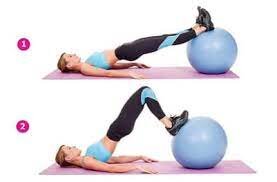
- During the eccentric phase of this exercise, you will isolate the hamstring using a Swiss ball or physioball.
- A physioball should be placed at your feet as you recline on an exercise mat.
- Place both of your feet on the physioball with your legs stretched, lifting your butt just a little bit off the floor.
- Knees bent, draw the ball back with both legs.
- Slowly lengthen your legs to bring the ball back to the beginning position while concentrating on eccentrically squeezing your hamstrings.
- For the required amount of reps and sets, repeat the exercise. Then switch sides once again.
- Perform the eccentric extension of the legs with one leg raised in the air and the other placed on a ball to make this exercise more difficult.
Eccentric hamstring curl
- You will curl the weight with both legs throughout this exercise, then gently return it to the starting position with one leg to enhance the eccentric force.
- This exercise can be finished by doing a sitting or lying hamstring curl version.
- With the back of your calves resting against the pad, adopt a sitting or lying hamstring curling position.
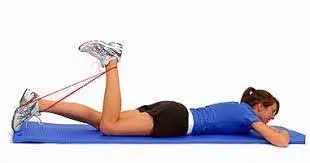
- Choose a weight that is a little bit lighter than what you would typically use for leg curls.
- By tightening your hamstrings until the pad touches the back of your upper thighs, curl the weight with both legs.
- Remove a leg from the cushion. To benefit from the eccentric component of the exercise, slowly and steadily drop the weight with the opposite leg.
- Lower the weight with the opposite leg on the subsequent rep, and continue in this manner for the required amount of reps and sets.
Barbell squats

- In order to give a modest degree of extra difficulty, this exercise slows down the eccentric (descending) phase of the standard barbell squat.
- If you’re a newbie or are unfamiliar with eccentric training, you may also execute this movement without any weight.
- Install a barbell with the necessary weight on a squat rack; this weight is often far lower than what you would use for ordinary squats.
- Place the bar on your back, unrack the weight, and stand with your feet slightly outwardly spaced and broader than shoulder-width apart.
- Kneel down, push against the weight on the bar, and count to three as you slowly fall. At this moment, the rep’s eccentric portion begins.
- After pausing briefly at the bottom of each rep, push through the floor to return to the beginning position.
- Continue the preceding steps, being sure to decrease gradually with each repetition.
Eccentric box step-downs
- In order to increase the intensity of the eccentric phase of this exercise, step up onto a box with one leg and gently step off the box with the other leg.
- To make things easier, you may complete them without weights or with a shorter box.
- Place a suitable-sized dumbbell in each hand and hold it as you stand in front of a step-up box. Beginners need to start with lighter weights and a smaller box.
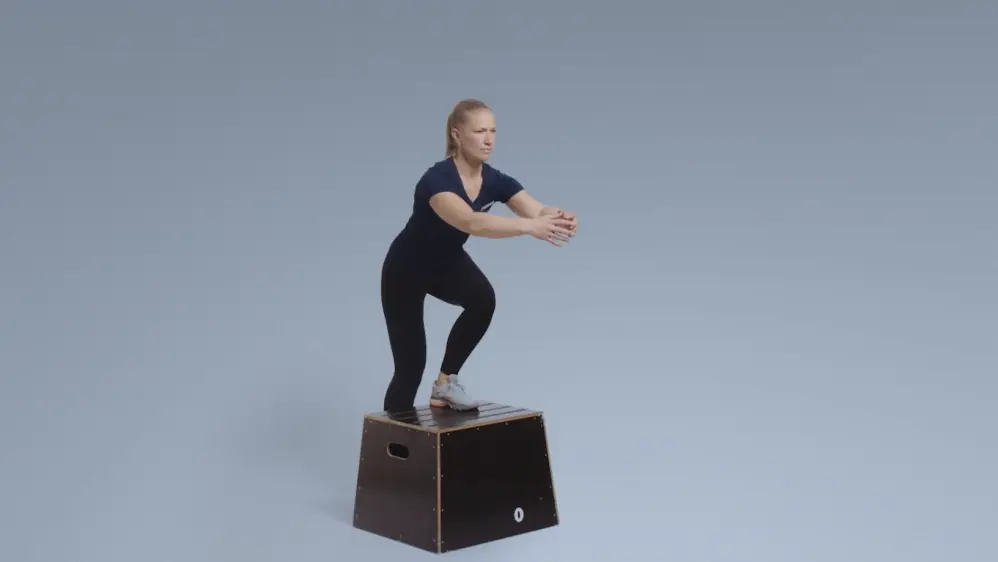
- Move your left leg up the side while stepping onto the box with your right leg.
- When you reach the top and find stability, carefully step down from the box with your left leg while feeling your quad contract eccentrically.
- Change sides to focus on the other leg for the same number of reps after completing the required eccentric reps for one leg.
Pull-ups with a band–Eccentrically

- To maximize muscle activation and intensity, you will slow down the descent phase of a standard pull-up when doing this activity.
- With a long resistance band tightly tied across the center of the bar, stand in front of a pullup bar.
- Step or leap up slowly to grab the bar with a grip that is broader than shoulder width. Enter the band using one or both feet.
- With the band’s support, raise yourself.
- With the band’s support, raise yourself. You should feel your back muscles contract as you carefully lower yourself down to the beginning position after stabilizing at the top with your head just above the bar. At this moment, the rep’s eccentric section begins. Repeat as necessary for the number of repetitions and sets.
Eccentric seated cable row
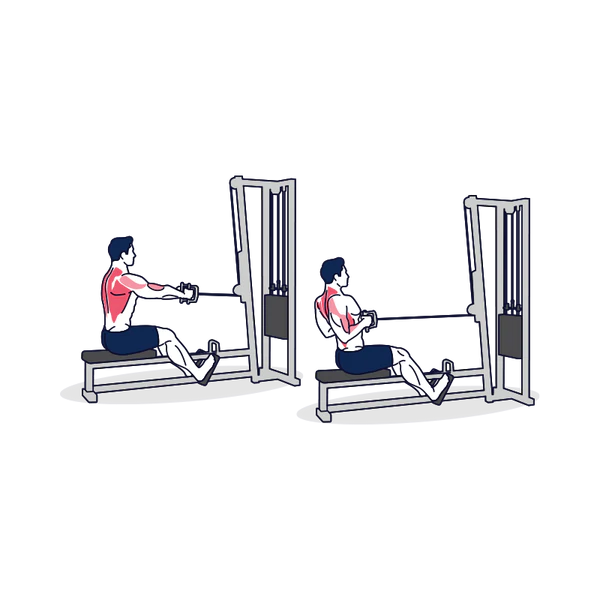
- By slowing down the eccentric phase of this seated cable row variant, you may increase the stress placed on the back muscles.
- Use a little less weight than usual while loading a seated cable row machine.
- As you take a seat on the bench, hold onto the bar or handles.
- Row the weight back while maintaining a straight torso until the handles or bar are almost touching your lower sternum.
- Slowly reverse the motion, returning the weight to the beginning position while feeling your lats constrict eccentrically.
- For the specified number of repetitions and sets, repeat the movement.
Dumbbell curl
- In this variation of the standard dumbbell curl, the eccentric part of the rep is slowed down to increase the intensity.
- Choose a dumbbell that is a little bit lighter than the one you would typically use for a dumbbell curl.
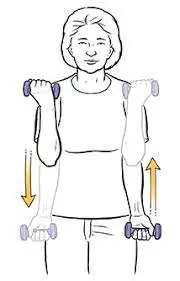
- Holding the dumbbells at your sides, simultaneously curl them both upward, pausing momentarily at the top. This action can also be done in a different way by alternately curling up one arm at a time.
- Slowly return the weights to the beginning position while feeling your biceps contract eccentrically.
- For the required number of reps and sets, repeat this exercise.
Common errors and things to keep in mind while exercising eccentrically
Even while eccentric training would seem like it would be very easy to do, there is still space for error, especially when first starting.
Here are the most typical errors and suggestions for avoiding them:
Using a very hefty weight
Even if the eccentric phase of a workout makes the muscles stronger, it’s crucial to employ the right weight.
You run a major danger of damaging a muscle or connective tissue if you attempt to execute eccentric exercise with too much resistance. A breakdown in an appropriate form brought on by applying too much weight might also reduce the efficacy of the workout.
Risks Associated With Eccentric Exercise
Any type of training carries some hazards. According to Pedemonte, “Eccentric training is known for inducing DOMS, or delayed onset muscle soreness.” DOMS often manifests within 12 to 24 hours after initiation and subsides five to seven days later.
Depending on how hard you work out, eccentric exercise will have different consequences on your muscles. It’s important to keep in mind that just little micro tears of the muscles are beneficial: “That’s what’s been shown to create a stimulus for muscle growth,” stated Pedemonte.
It’s essential to incorporate active recovery activities like walking, swimming, or yoga since when your muscles are healing, they are weaker and more prone to injury.
Also keep in mind that since eccentric exercise allows your body to manage greater weight, lifting too much weight too fast might result in strains (stretching or tearing a tendon) or sprains (stretching or tearing a ligament). Guglielmo said that if you do an eccentric pull-up, when you gently lower your body away from the bar, but are unable to support your weight, you risk dropping too rapidly and tearing or pulling something.
you avoid damage, make careful you increase your strength gradually. And if you need one, don’t be hesitant to ask for a spotter. Guglielmo stated, “Some activities, like a bench press with a barbell, are safer when done alongside someone else.”It’s always better to start ‘easy’ and increase the intensity when you’re ready rather than to start too advanced and get hurt.”
Speeding up or slowing down
Accurate timing of the eccentric phase of the action is essential for completing good eccentric training. The majority of the time, eccentric training plans will state how long the eccentric part of the rep should last.
If you move too quickly, you cannot stimulate the muscles sufficiently to get the advantages of eccentric exercise. On the other side, if you move too slowly, you could fatigue your muscles and feel a lot of discomfort. So it’s essential to follow the time recommendations made by your training program.
Pay attention to symptoms of DOMS
DOMS, or delayed onset muscle soreness, is an uncomfortable muscular ache that often develops 1 to 3 days after a demanding activity. Microtears made in the muscle during activity are frequently the culprit.
It can persist anywhere from 24 and 72 hours, depending on how bad it is, however, it may linger longer in extreme circumstances. Due to its capacity to inflict microtrauma on the muscle, eccentric exercise in particular is known to generate discomfort.
It’s ideal to start with modest weights at a low intensity to develop a feel for the motions before increasing the resistance to prevent DOMS during eccentric activity.
Summary
While concentric workouts involve motions that shorten the muscle, eccentric exercises involve muscular contractions that extend the muscle.
With less effort than concentric exercise, eccentric exercise can enhance muscle and tendon strength, making it a more convenient alternative for those with low energy levels. People with a variety of illnesses, such as tendinopathy and arthritis, can use it without risk. Modified push-ups, squats, and heel drops are a few examples of eccentric exercises in which the body is lowered slowly and raised swiftly.
FAQs
What is eccentric vs. concentric?
Eccentric and concentric contraction: Concentric contractions cause the muscle to shorten as the tension rises to match the resistance. When a muscle contracts eccentrically, it lengthens when the resistance exceeds the force it is providing.
What do eccentric exercises work?
The descending portion of a motion is an eccentric movement. It occurs when a muscle contracts while being extended like your glutes do when you lower into a squat or your biceps do when you drop a weight after doing a curl. Every muscle fiber in your body is actually stronger when it moves eccentrically, as it turns out.
Is yoga an eccentric exercise?
Yoga focuses on eccentric contraction, which causes the muscle to expand as it contracts, giving the muscles their sleek, extended appearance while also enhancing flexibility in the muscles and joints.
Is walking eccentric exercise?
Downhill walking is a typical demonstration of eccentric exercise. With each step we take down the slope, the quadriceps muscle undergoes an eccentric contraction as it controls the pace of knee flexion in opposition to the pull of gravity.
What are the 3 benefits of eccentric training?
Eccentric training has a number of potential advantages, such as enabling supramaximal training, enhancing movement efficiency, and stimulating more muscular growth.
Is eccentric stronger than concentric?
It is commonly known that muscles that lengthen while being stimulated (i.e., eccentric muscle action) are stronger and use less energy (per unit of force) than muscles that either shorten while being triggered (i.e., concentric contraction) or maintain at a fixed length while being active (i.e., isometric contraction).




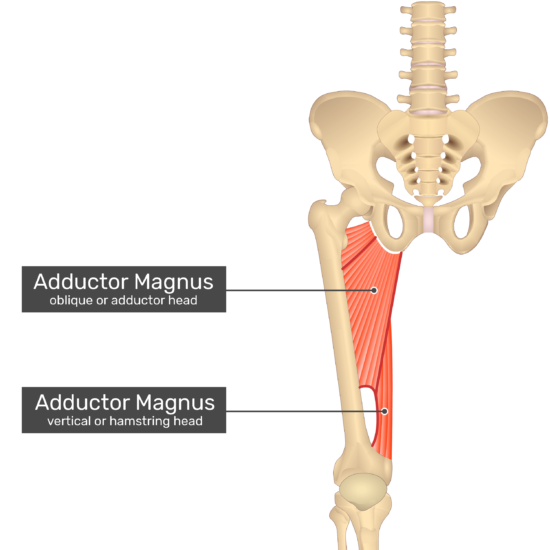
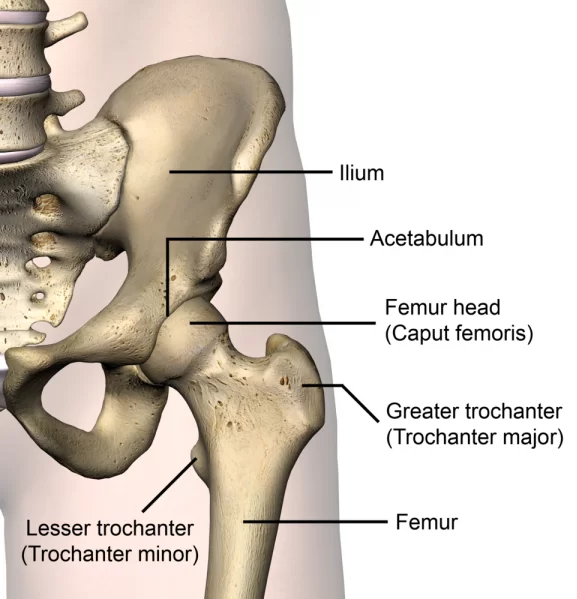

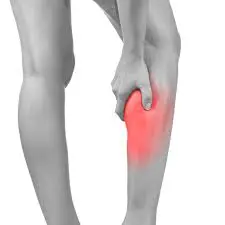
One Comment